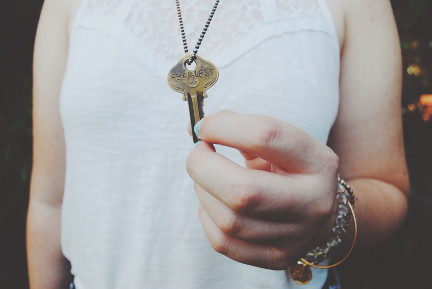Disclosure: This post includes affiliate links. Clubkeychain may earn a commission if you go through them to make a purchase. This does not affect the purchase price of the product or service you buy.
The Merriam-Webster dictionary defines an accessory as an object or device that is not essential in itself but adds to the beauty, convenience, or effectiveness of something else.
There are some people who will argue that the keychain is the accessory, and not the other way around. And normally I might agree. Except that this is Clubkeychain.com and keychains are our focus. We will just need to agree to disagree.
So what is a key? There are many definitions for a key but the one we are looking for is ” a means of gaining or preventing entrance, possession, or control” It is a device used to open a lock, or to turn a device on or off, like an automobile. Just about any device or area that requires controlled access has a lock and key.
When were keys invented?
Keys first appeared around the time locks were developed. Probably around 6 thousand years ago in Babylon and Egypt. These were made of wood, were bulky, and easily broken into by brute force. Keys back then looked nothing like what we know today. These locks and keys provided only a small amount of protection. But when broken into, the damage would show the owner that someone tampered the locks.

The Roman empire improved upon the design by using iron and bronze instead of wood. Locks and keys were very expensive to make back then and used more by the Nobility. Having keys was a very effective way of publicly showing your wealth.
The Romans also developed what we know today as the “skeleton key”, a cylindrical shaft with a thin rectangular tooth at the end. This basic design remained unchanged for almost 17 centuries after the fall of the Roman empire and is still found in some old homes.
In the 18th century, Linus Yale Sr. invented the pin and tumbler design. His son, Linus Yale Jr. refined and perfected that design. He would also introduce the use of flat key with serrated edges. Today, keys are still based on variations of those earlier designs by Yale, Bramah, or Chubb.
In the last 10 years, electronic locks and keys that no longer rely on tumblers, pins, or even close proximity, have become more common.
These use electronic signals, pass codes, and encryption to help secure and control your devices and doorways.
Keys in Fashion

Today, keys are for more than just opening doors and locks. Used and purposely manufactured keys are finding their way into fashion, as gifts and collectibles. In much the same way that keychains can. Although keychains are better in being used for business promotion than keys.
If you are good with your hands, then you might try and repurpose used keys into necklaces. Old vintage keys work very well. Just add a few beads, and a chain.
Keys in Social Mission
Some companies use keys to spread and support social causes. TheGivingKeys.com is such a company.
TheGivingKeys.com is a social enterprise, with the mission of “Providing employment to people transitioning out of homelessness.”
To this date, TheGivingKeys.com has created over 70 + job opportunities. They have done this by repurposing old keys and turning these into fashion accessories.
Salute to Keys
Keys. Where would keychains be without keys?
© 2019 – 2021, Norman Talon. All rights reserved.
